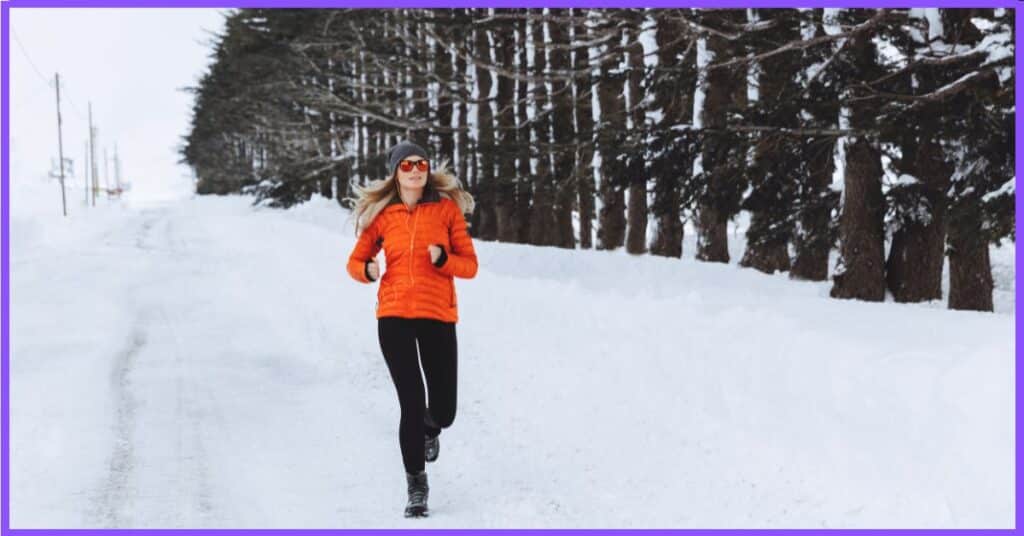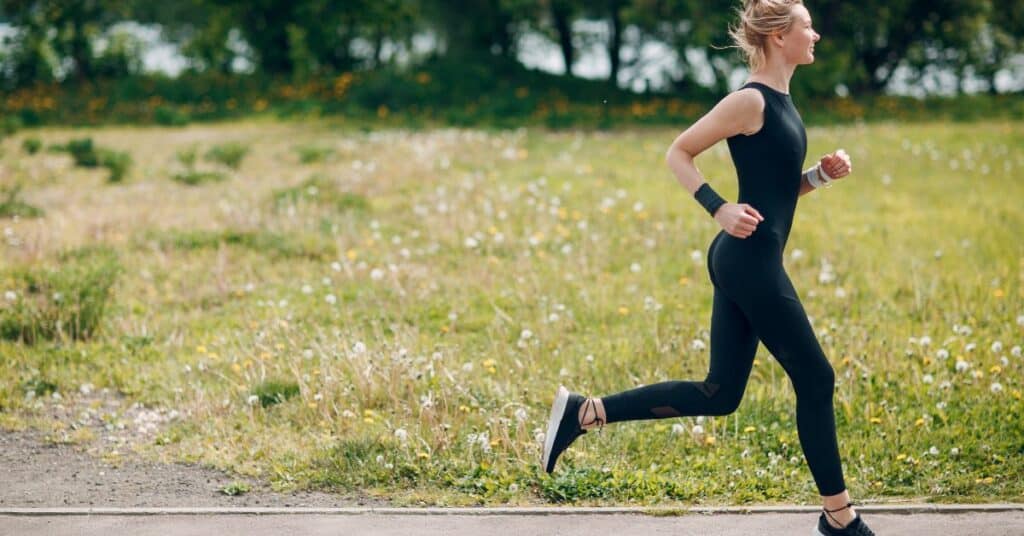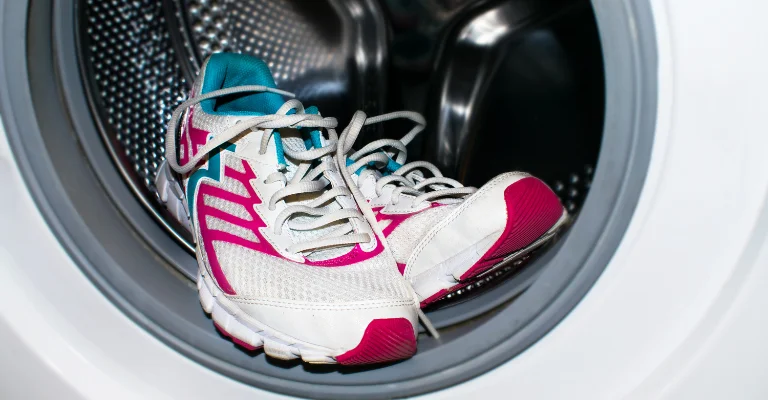7-Step Guide: Dressing Right with Running Clothes by Temperature
Find your perfect running clothes by temperature with our comprehensive guide! From winter’s chill to summer’s heat, discover the ideal attire to keep you comfortable and motivated on every run.
Hey there, fellow runners! As someone who loves hitting the pavement and embracing the joy of running, I understand the importance of dressing appropriately for different temperatures.
Whether it’s the chill of winter, the unpredictable weather of spring or fall, or the scorching heat of summer, choosing the right running gear can create all the difference in providing a relaxing and rewarding experience.
Here’s my comprehensive guide to dressing right for running in various temperatures:
A Guide For Running Clothes by Temperature
1. Running in Winter: 40º F and Below
Winter runs can be invigorating but demand the right gear to stay warm and cozy. Here’s what I recommend:
a) Base Layer: Moisture-Wicking Fabric The first layer should be a snug-fitting, moisture-wicking material that keeps sweat away from your skin, preventing chills.
b) Mid-Layer: Insulating Material Opt for wool, down, or synthetic equivalents to provide excellent insulation and retain body heat.
c) Outer Layer: Windproof and Waterproof Shield yourself from the elements with a windproof and waterproof jacket or vest with zippers and a hood.
d) Protect Your Extremities Remember gloves, a headband or hat, and socks to keep your extremities warm. Consider a neck gaiter or mask to warm the air you breathe.

2. Running in Spring or Fall: 40º F to 60º F
These transitional seasons require adaptability. Be prepared to adjust your layers as the temperature fluctuates:
a) Base Layer: Breathable Fabric Choose a breathable and moisture-wicking base layer with a short or long-sleeve shirt option.
b) Mid-Layer: A lightweight jacket or vest provides adequate insulation and protects you from the wind or light rain. Consider a half-zip shirt for easy temperature regulation.
c) Optional Accessories Carry a hat or visor to shield your eyes from the sun or rain. Remember gloves if you’re susceptible to cold hands.
d) Bottoms Opt for shorts or tights based on your comfort level. Ensure they have pockets or a waistband for your essentials.

3. Running in Summer: 60º F and Above
Embrace the warmth of summer while staying protected from the sun’s rays and heat:
a) Lightweight and Breathable Fabrics Choose lightweight and breathable attire with mesh panels or cooling technology to keep you cool and dry.
b) Shield Yourself Wear a hat or visor to protect your eyes from the sun, and remember sunglasses to shield your eyes from UV rays and glare.
c) Sunscreen Protect your skin from sunburn and cancer using water-resistant, sweat-proof, and broad-spectrum sunscreen.
d) Bottoms Opt for loose-fitting shorts, skirts, tank tops, or crop tops to expose more skin and allow better airflow.
Proper clothing choice is key to optimizing your running experience in different temperatures. Embrace the right layers and accessories, and you’ll be well-prepared for any weather condition that comes your way. Happy running!

4. Dressing for Rainy Days
Rain shouldn’t dampen your running spirit! If the weather forecast calls for showers, follow these tips to stay dry and comfortable:
a) Waterproof Outer Layer Invest in a high-quality waterproof jacket or poncho to keep yourself dry. Look for one with taped seams for added protection against the rain.
b) Water-Resistant Accessories Opt for a water-resistant hat or cap to protect your head and face. Consider wearing a visor to keep raindrops away from your eyes.
c) Choose the Right Footwear Select running shoes with some level of water resistance, or opt for shoe covers to prevent your feet from getting soaked.
5. Dressing for Humid Conditions
Running in high humidity can be challenging due to excessive sweating. Stay cool and comfortable with these suggestions:
a) Moisture-Wicking Fabrics Stick to moisture-wicking materials that help draw sweat out from your skin, allowing for better evaporation.
b) Loose-Fitting Clothing Opt for loose-fitting tops and bottoms to promote airflow and minimize skin-to-fabric contact, reducing discomfort.
c) Hydration and Electrolytes Hydrate adequately before, during, and after your run. Consider carrying a water bottle with electrolyte-enhanced fluids. For more about Sports Clothes Fails: Avoiding Wardrobe Malfunctions in Athletics.
6. Safety Essentials
Regardless of the temperature, prioritizing safety is crucial during your runs:
a) Reflective Gear For low-light conditions or night runs, wear reflective clothing or accessories to enhance visibility to motorists.
b) Running Lights Attach small LED lights to your clothing or gear to make yourself even more noticeable in the dark.
c) ID Bracelet Consider wearing an ID bracelet or carrying identification with emergency contact information, just in case.
7. Dressing for Your Comfort
Ultimately, running attire should cater to your comfort and individual preferences:
a) Test Your Gear Before race day or long runs, test new gear in various weather conditions to ensure it suits your needs.
b) Dress in Layers Even in warmer temperatures, layering can provide versatility as the weather changes during your run.
c) Avoid Cotton Cotton absorbs moisture and can lead to chafing. Opt for technical fabrics designed for running.
d) Listen to Your Body Pay attention to your body’s signals. If you’re feeling too hot or cold, adjust your clothing accordingly. For more about comfortable athletic clothing.
Closing Argument: (Running Clothes by Temperature)
As a passionate runner, dressing appropriately for different temperatures is essential for a successful and enjoyable experience. Following this guide and tailoring your attire to the weather conditions, you’ll be well-prepared to tackle any run, from chilly winter mornings to scorching summer afternoons.
Note: Dressing right for the occasion can elevate your running game and make each mile more satisfying. Happy running, and may the weather always be in your favor!
Dart Sports Pro is your ultimate guide to dart sports, with reviews, tips, news, and more on Sports Gear and other topics.
Common Queries:
Q. What should I wear for running in hot weather?
Opt for lightweight and breathable fabrics like mesh or moisture-wicking materials for hot weather. Choose shorts or lightweight leggings, a tank top or short-sleeve shirt, and a visor or hat to protect your face from the sun.
Q. What should I wear for running in cold weather?
In cold weather, dress in layers to trap heat and allow you to remove them as you warm up. Start with a moisture-wicking base layer, add a long-sleeve shirt or fleece mid-layer, and finish with a wind-resistant jacket or thermal outer layer. Remember gloves, a hat, and thermal leggings or pants.
Q. What are the best running clothes for rain?
Look for water-resistant or waterproof fabrics that will keep you dry during rainy runs. A lightweight rain jacket with taped seams and a cap or hood is essential to shield your head. Opt for quick-drying materials like polyester rather than cotton.
Q. What type of clothing is suitable for running in windy conditions?
When it’s windy, choose form-fitting clothes that won’t flap around and slow down your pace. Wear a windproof jacket or vest to protect your torso, and consider adding arm sleeves or gloves to keep your extremities warm.
Q. How can I dress appropriately for running in freezing temperatures?
Layering is key when running in freezing temperatures. Start with a moisture-wicking base layer followed by an insulating mid-layer such as fleece or down-filled jackets. Wear insulated tights or pants for added warmth, and remember accessories like ear muffs and neck gaiters.
Q. Are there specific clothes recommended for running in high humidity?
In humid conditions, prioritize clothing made of breathable fabrics that wick away sweat quickly to avoid discomfort and chafing. Opt for loose-fitting garments that allow air circulation, and consider choosing light-colored clothing to reflect heat.
Q. What should I wear for running in mild weather?
For mild weather, you have more flexibility. Choose moisture-wicking tops and bottoms according to personal preference, such as shorts, capris, or leggings with a breathable t-shirt or long-sleeve shirt. Consider a lightweight jacket if there’s a chance of temperature changes during your run.
Q. How can I dress appropriately for running in extreme heat or cold?
In extreme heat or cold conditions, it’s crucial to prioritize safety and comfort. Stay indoors if the weather is too extreme, but if you must go out, opt for loose-fitting, lightweight clothes in hot weather and layer up with appropriate insulation in freezing temperatures. Keep yourself hydrated and be mindful of any signs of overheating or frostbite.
Further Reading:
The first is What to Wear in Various Weather – Road Bike Rider Cycling Site. This comprehensive guide covers what to wear cycling in different temperatures, from 70 degrees Fahrenheit (21 degrees Celsius) to 20 degrees and below (-6.7 degrees Celsius).
The second one is What to Wear Cycling | ProBikeKit USA. This more general guide covers what to wear cycling in different seasons and situations, such as rain, wind, and dark. It also showcases some of the latest cycling clothing trends and products from various brands.




